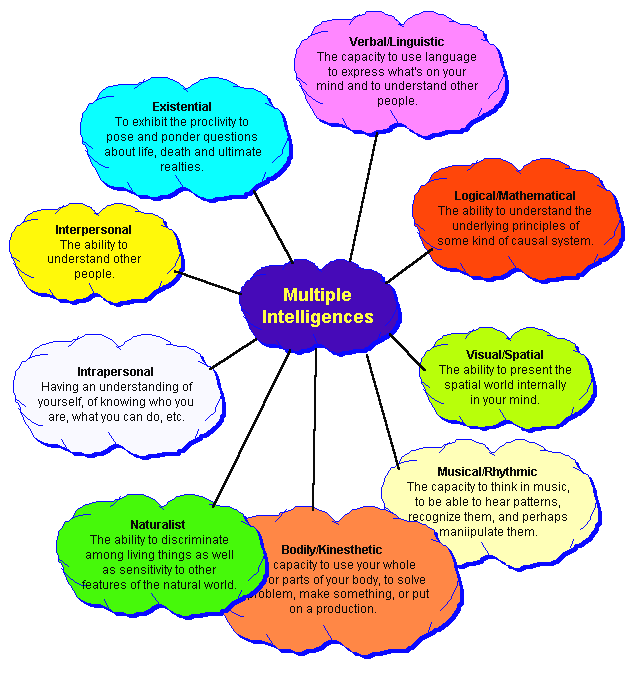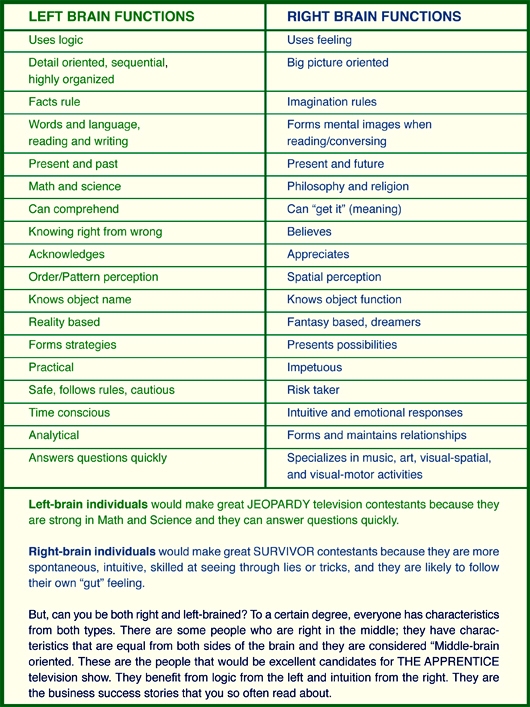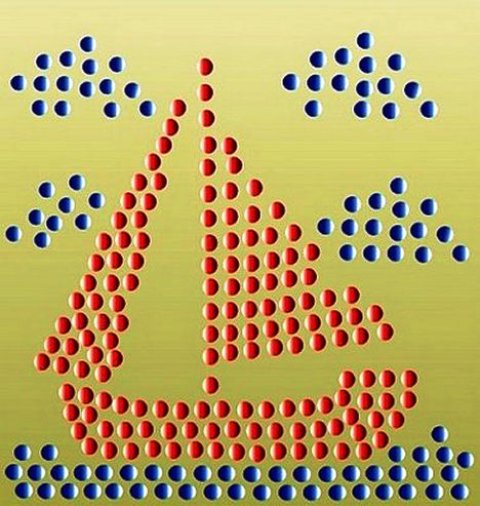
The Nine Types of Intelligence
1. Naturalist Intelligence (“Nature Smart”)
Designates the human ability to discriminate among living things (plants, animals) as well as sensitivity to other features of the natural world (clouds, rock configurations). This ability was clearly of value in our evolutionary past as hunters, gatherers, and farmers; it continues to be central in such roles as botanist or chef. It is also speculated that much of our consumer society exploits the naturalist intelligences, which can be mobilized in the discrimination among cars, sneakers, kinds of makeup, and the like.
2. Musical Intelligence (“Musical Smart”)
Musical intelligence is the capacity to discern pitch, rhythm, timbre, and tone. This intelligence enables us to recognize, create, reproduce, and reflect on music, as demonstrated by composers, conductors, musicians, vocalist, and sensitive listeners. Interestingly, there is often an affective connection between music and the emotions; and mathematical and musical intelligences may share common thinking processes. Young adults with this kind of intelligence are usually singing or drumming to themselves. They are usually quite aware of sounds others may miss.
3. Logical-Mathematical Intelligence (Number/Reasoning Smart)
Logical-mathematical intelligence is the ability to calculate, quantify, consider propositions and hypotheses, and carry out complete mathematical operations. It enables us to perceive relationships and connections and to use abstract, symbolic thought; sequential reasoning skills; and inductive and deductive thinking patterns. Logical intelligence is usually well developed in mathematicians, scientists, and detectives. Young adults with lots of logical intelligence are interested in patterns, categories, and relationships. They are drawn to arithmetic problems, strategy games and experiments.
4. Existential Intelligence
Sensitivity and capacity to tackle deep questions about human existence, such as the meaning of life, why do we die, and how did we get here.
5. Interpersonal Intelligence (People Smart”)
Interpersonal intelligence is the ability to understand and interact effectively with others. It involves effective verbal and nonverbal communication, the ability to note distinctions among others, sensitivity to the moods and temperaments of others, and the ability to entertain multiple perspectives. Teachers, social workers, actors, and politicians all exhibit interpersonal intelligence. Young adults with this kind of intelligence are leaders among their peers, are good at communicating, and seem to understand others’ feelings and motives.
6. Bodily-Kinesthetic Intelligence (“Body Smart”)
Bodily kinesthetic intelligence is the capacity to manipulate objects and use a variety of physical skills. This intelligence also involves a sense of timing and the perfection of skills through mind–body union. Athletes, dancers, surgeons, and craftspeople exhibit well-developed bodily kinesthetic intelligence.
7. Linguistic Intelligence (Word Smart)
Linguistic intelligence is the ability to think in words and to use language to express and appreciate complex meanings. Linguistic intelligence allows us to understand the order and meaning of words and to apply meta-linguistic skills to reflect on our use of language. Linguistic intelligence is the most widely shared human competence and is evident in poets, novelists, journalists, and effective public speakers. Young adults with this kind of intelligence enjoy writing, reading, telling stories or doing crossword puzzles.
8. Intra-personal Intelligence (Self Smart”)
Intra-personal intelligence is the capacity to understand oneself and one’s thoughts and feelings, and to use such knowledge in planning and directioning one’s life. Intra-personal intelligence involves not only an appreciation of the self, but also of the human condition. It is evident in psychologist, spiritual leaders, and philosophers. These young adults may be shy. They are very aware of their own feelings and are self-motivated.
9. Spatial Intelligence (“Picture Smart”)
Spatial intelligence is the ability to think in three dimensions. Core capacities include mental imagery, spatial reasoning, image manipulation, graphic and artistic skills, and an active imagination. Sailors, pilots, sculptors, painters, and architects all exhibit spatial intelligence. Young adults with this kind of intelligence may be fascinated with mazes or jigsaw puzzles, or spend free time drawing or daydreaming.
HOW THE BRAIN WORK
It's important to understand the complexity of the human brain. The human brain weighs only three pounds but is estimated to have about 100 billion cells. It is hard to get a handle on a number that large (or connections that small). Let's try to get an understanding of this complexity by comparing it with something humans have created--the entire phone system for the planet. If we took all the phones in the world and all the wires (there are over four billion people on the planet), the number of connections and the trillions of messages per day would NOT equal the complexity or activity of a single human brain. Now let's take a "small problem"--break every phone in Michigan and cut every wire in the state. How long would it take for the entire state (about 15 million people) to get phone service back? A week, a month, or several years? If you guessed several years, you are now beginning to see the complexity of recovering from a head injury. In the example I used, Michigan residents would be without phone service while the rest of the world had phone service that worked fine. This is also true with people who have a head injury. Some parts of the brain will work fine while others are in need of repair or are slowly being reconnected.
AN ELECTRICAL AND CHEMICAL MACHINE
Let's start looking at the building blocks of the brain. As previously stated, the brain consists of about 100 billion cells. Most of these cells are called neurons. A neuron is basically an on/off switch just like the one you use to control the lights in your home. It is either in a resting state (off) or it is shooting an electrical impulse down a wire (on). It has a cell body, a long little wire (the "wire" is called an axon), and at the very end it has a little part that shoots out a chemical. This chemical goes across a gap (synapse) where it triggers another neuron to send a message. There are a lot of these neurons sending messages down a wire (axon). By the way, each of these billions of axons is generating a small amount of electrical charge; this total power has been estimated to equal a 60 watt bulb. Doctors have learned that measuring this electrical activity can tell how the brain is working. A device that measures electrical activity in the brain is called an EEG (electroencephalograph).
Each of the billions of neurons "spit out" chemicals that trigger other neurons. Different neurons use different types of chemicals. These chemicals are called "transmitters" and are given names like epinephrine, norepinephrine, or dopamine. Pretty simple, right? Well, no. Even in the simplified model that I'm presenting, it gets more complex.
IS THE BRAIN ONE BIG COMPUTER?
Is the brain like a big phone system (because it has a lot of connections) or is it one big computer with ON or OFF states (like the zeros and ones in a computer)? Neither of the above is correct.
Let's look at the brain using a different model. Let's look at the brain as an orchestra. In an orchestra, you have different musical sections. There is a percussion section, a string section, a woodwind section, and so on. Each has its own job to do and must work closely with the other sections. When playing music, each section waits for the conductor. The conductor raises a baton and all the members of the orchestra begin playing at the same time playing on the same note. If the drum section hasn't been practicing, they don't play as well as the rest of the orchestra. The overall sound of the music seems "off" or plays poorly at certain times. This is a better model of how the brain works. We used to think of the brain as a big computer, but it's really like millions of little computers all working together.
GETTING INFORMATION IN AND OUT OF THE BRAIN
How does information come into the brain? A lot of information comes in through the spinal cord at the base of the brain. Think of a spinal cord as a thick phone cable with thousands of phone lines. If you cut that spinal cord, you won't be able to move or feel anything in your body. Information goes OUT from the brain to make body parts (arms and legs) do their job. There is also a great deal of INCOMING information (hot, cold, pain, joint sensation, etc.). Vision and hearing do not go through the spinal cord but go directly into the brain. That’s why people can be completely paralyzed (unable to move their arms and legs) but still see and hear with no problems.
Information enters from the spinal cord and comes up the middle of the brain. It branches out like a tree and goes to the surface of the brain. The surface of the brain is gray due to the color of the cell bodies (that's why it's called the gray matter). The wires or axons have a coating on them that's colored white (called white matter).
TWO BRAINS--LEFT AND RIGHT HEMISPHERE
We have two eyes, two hands, and two legs, so why not two brains? The brain is divided in half, a right and left hemisphere. The right hemisphere does a different job than the left. The right hemisphere deals more with visual activities and plays a role in putting things together. For example, it takes visual information, puts it together, and says "I recognize that--that's a chair," or "that's a car" or "that's a house." It organizes or groups information together. The left hemisphere tends to be the more analytical part; it analyzes information collected by the right. It takes information from the right hemisphere and applies language to it. The right hemisphere "sees" a house, but the left hemisphere says, "Oh yeah, I know whose house that is--it's Uncle Bob's house."
So what happens if one side of the brain is injured? People who have an injury to the right side of the brain "don't put things together" and fail to process important information. As a result, they often develop a "denial syndrome" and say "there's nothing wrong with me." For example, I treated a person with an injury to the right side of the brain--specifically, the back part of the right brain that deals with visual information--and he lost half of his vision. Because the right side of the brain was injured, it failed to "collect" information, so the brain did not realize that something was missing. Essentially, this person was blind on one side but did not know it. What was scary was that this person had driven his car to my office. After seeing the results of the tests that I gave him, I asked, "Do you have a lot of dents on the left side of your car?" He was amazed that I magically knew this without seeing his car. Unfortunately, I had to ask him not to drive until his problems got better. But you can see how the right side puts things together.
The left side of the brain deals more with language and helps to analyze information given to the brain. If you injure the left side of the brain, you're aware that things aren't working (the right hemisphere is doing its job) but are unable to solve complex problems or do a complex activity. People with left hemisphere injuries tend to be more depressed, have more organizational problems, and have problems using language.
VISION--HOW WE SEE THINGS
Information from our eyes goes to areas at the very back of the brain. We've all seen cartoons where the rabbit gets hit on the head and the rabbit sees stars. This can actually happen in human beings (trust me, not a good thing to do at home!). If you take a hard enough blow to the back of the head, this brain area bangs against back of your skull. This stimulates it and you can see stars and flashing lights. Remember those two hemispheres? Each hemisphere processes half the visual information. Visual information that we see on the left gets processed by the right hemisphere. Information on the right gets processed by the left hemisphere. Remember, wires that bring in information to the brain are "crossed"--visual information from the left goes to the right brain.
MOVEMENT
The area of the brain that controls movement is in a very narrow strip that goes from near the top of the head right down along where your ear is located. It's called the motor strip. If I injure that area, I'll have problems controlling half of my body. If I have a stroke in the left hemisphere of my brain, the right side of the body will stop working. If I have an injury to my right hemisphere in this area, the left side of my body stops working (remember, we have two brains). This is why one half of the face may droop when a person has had a stroke.
HEARING AND LANGUAGE
In the general population, 95 percent of people are right-handed, which means that the left hemisphere is the dominant hemisphere. (For you left-handers, the right hemisphere is dominant.) With right-handed people, the ability to understand and express language is in this left temporal lobe. If I were to take a metal probe, and charge it with just a bit of electricity, and put it on the "primary" area of my left temporal lobe, I might say "hey, I hear a tone." If I move this probe to a more complex area of the temporal lobe, I might hear a word being said. If I move the electrical probe to an even more complex area, I might hear the voice of somebody I recognize; "I hear Uncle Bob's voice." We have simple areas of the temporal lobe that deal with basic sounds and other areas of the temporal lobe that look at more complex hearing information.
The right temporal lobe also deals with hearing. However, its job is to process musical information or help in the identification of noises. If this area is damaged, we might not be able to appreciate music or be able to sing. Because we tend to think and express in terms of language, the left temporal lobe is more critical for day-to-day functioning.
The vision areas and the hearing areas of the brain have a boundary area where they interact. This is the area of the brain that does reading. We take the visual images and convert them into sounds. So if you injure this area (or it doesn't develop when you are very young), you get something called dyslexia. People who have dyslexia have problems that may include seeing letters backwards or have problems understanding what written words mean.
SKIN SENSATION
If something lands on my left hand, this information will be transmitted to the right side of my brain. It goes to the area of the brain next to the area that deals with movement. The tactile area of the brain deals with physical sensation. Movement and feeling are closely related, so it makes sense that they are next to each other in the brain. Because movement and tactile areas are located close to each other, it is not uncommon for people with a brain injuries to lose both movement and feeling in parts of their body. Remember--tactile information from the left side of the body goes to the right brain, just like movement and vision.
FRONTAL LOBES--Planning, Organizing, Controlling
The biggest and most advanced part of the brain is the frontal lobe. (It's called the frontal lobe because it's in the front part of brain.) One job of the frontal lobe is planning. You have probably heard of "frontal lobotomies." At the turn of the century, this surgery was done on people who were very violent or who were in a psychiatric hospital because they were very agitated. Doctors used surgery to damage this area of the brain. Following this surgery, people became very passive and less violent. At first, scientists saw this as a great thing. Neurosurgery could stop behavioral problems such as violence. The problem was that the patients stopped doing a lot of other things. They didn't take care of themselves and they stopped many activities of daily living. They basically sat there. In head injury, individuals with frontal lobe impairment seem to lack motivation and have difficulty doing any task that requires multiple steps (e.g., fixing a car or planning a meal). They have problems with planning.
The frontal lobe is also involved in organizing. For a lot of activities, we need to do step A, then step B, then step C. We have to do things in order. That's what the frontal lobes help us do. When the frontal lobe is injured, there is a breakdown in the ability to sequence and organize. A common example is people who cook and leave out a step in the sequence. They forget to add an important ingredient or they don't turn the stove off. I've met a lot of patients who've burned or melted a lot of pans.
Additionally, the frontal lobes also play a very important role in controlling emotions. Deep in the middle of the brain are sections that control emotions. They're very primitive emotions that deal with hunger, aggression, and sexual drive. These areas send messages to other parts of the brain to DO SOMETHING. If you're mad, hit something or someone. If you're hungry, grab something and eat it. The frontal lobes "manage" emotions. In general, the frontal lobe has a NO or STOP function. If your emotions tell you to punch your boss, it's the frontal lobes that say "STOP or you are going to lose your job." People have often said to me "a little thing will set me off and I'm really mad." The frontal lobes failed to stop or turn off the emotional system.
On the other hand, we have talked about how the frontal lobes plan activities. The frontal lobes may fail to plan for some types of emotion. For example, sexual interest involves some level of planning or preparation. Without this planning, there is a lack of sexual interest. A lack of planning can also affect the expression of anger. I've had some family members say "You know, the head injury actually improved him, he's not such a hot-head anymore." If you listen very carefully, you're also going to hear "he's not as motivated anymore." Remember, the frontal lobe plans activities as well as controls emotions.


